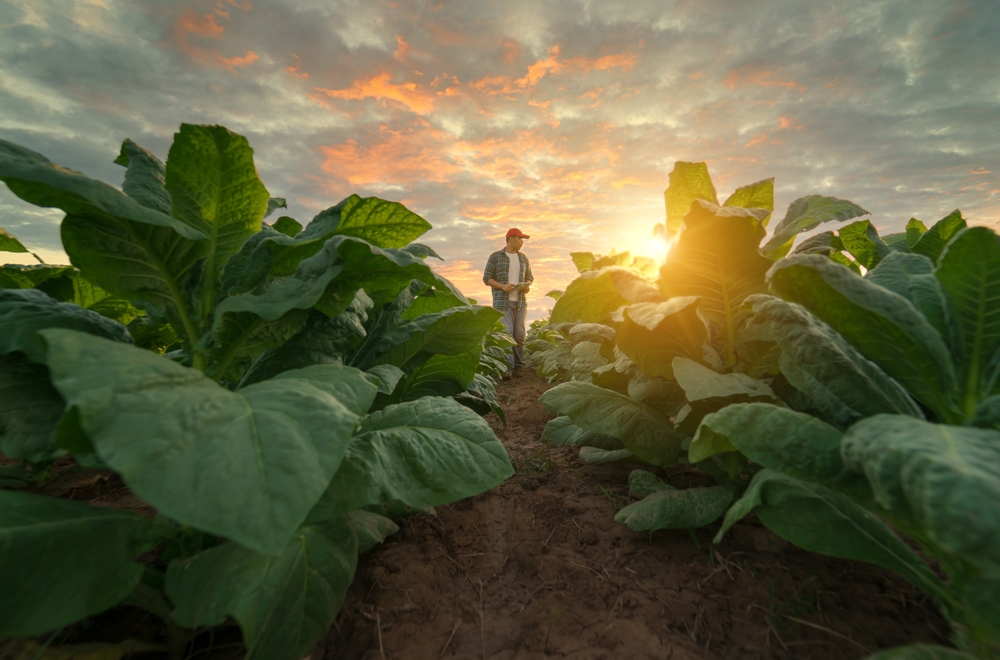History of Tobacco Plant: The Evolution of Cigarette Tobacco
The history of the tobacco plant is strongly connected to the social, economic, and cultural fabric of the world. Tobacco has been used in many forms for hundreds of years, but the development of cigarette tobacco is a major event in this past.
Origins of the Tobacco Plant
Nicotiana tabacum, the tobacco plant, is native to the Americas and has been used by people for a very long time. Before European travelers came, people in North and South America used tobacco for religious and medical purposes. People smoked, chewed, or used the plant’s leaves in ceremonies to talk to the spirit world.
Introduction to Europe and Global Spread
In the late 15th century, Christopher Columbus and other explorers brought tobacco back to Europe. Initially, it was a novelty, but its popularity quickly spread across the continent. By the 16th and 17th centuries, tobacco had become a significant commodity in the global trade network, cultivated in European colonies, especially in the Caribbean, Virginia, and Maryland.
Development of Cigarette Tobacco
In the early 1800s, the idea of cigarettes, which were smaller and easier to carry, began to take shape. Before this, pipes, cigars, and snuff were the main ways people smoked tobacco.
Early Cigarettes: The first cigarettes were pretty rough and were rolled by hand. In Spain in the 1830s, cigarrillos (small cigars) became popular. This led to the creation of tobacco sticks wrapped in paper.
Industrialization: In the late 1800s, machines were made that could make a lot of cigarettes. The cigarette rolling machine invented by James Bonsack and patented in 1880 changed the business by making cigarettes much cheaper and making more of them.
Branding and Marketing: Companies like the American Tobacco Company, which was started by James Buchanan Duke, took advantage of these improvements by actively marketing cigarettes and making brands like Lucky Strike and Camel the most popular ones. As ads became more popular in the early 1900s, smoking cigarettes became even more a part of everyday life.
Changes in Tobacco Cultivation and Production
Cigarette use went up, and so did the growing and making of tobacco. Nicotiana tabacum types were bred to improve taste, nicotine content, and suitability for mass production. Some important changes were:
Bright leaf Tobacco: This type of tobacco, which is also called Virginia tobacco, became the most popular for cigarettes because it has a gentle flavor and can soak up flavors and sweeteners. Burley tobacco is another famous type used in cigarettes. It is known for being able to soak up flavors, which lets companies make their own blends.
Health Concerns and Regulatory Changes
In the 20th century, people also became more aware of the health problems that smoking can cause. Public health efforts and changes to the law were made after studies showed a link between smoking cigarettes and lung cancer and other diseases.
Surgeon General’s Report: The 1964 study was a turning point because it officially recognized that smoking is bad for your health. This led to warning labels being put on cigarette packages.
Advertising Restrictions: Over the next few decades, many countries put in place strict rules against tobacco promotion, sponsorship, and smoking in public.
Modern Tobacco Industry
The tobacco business is still changing to keep up with new rules and public opinion. Many wealthy countries have seen a drop in the number of people smoking regular cigarettes. However, tobacco companies have expanded their offerings to include electronic cigarettes and smokeless tobacco. But cigarette tobacco is still a big part of the world tobacco market. This is because people in developing countries want it.


먹튀감정사: https://www.danews.kr/
[먹튀검증]으로 먹튀 피해를 예방하세요 먹튀오프가 안전한 온라인 카지노와 토토사이트를 선택할 수 있도록 도와드립니다.
awesome